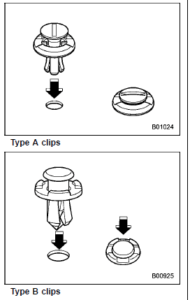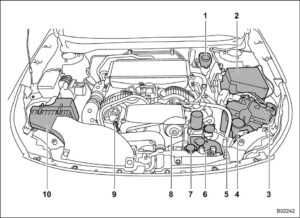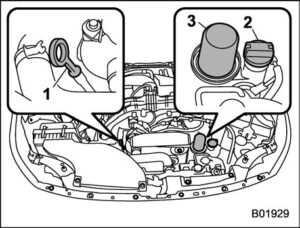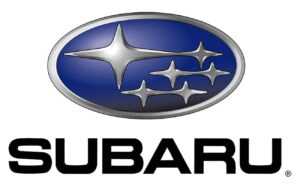Subaru Legacy 2023 Maintenance Tips Touring XT
The 2023 Subaru Legacy Touring XT is equipped with an advanced maintenance system that guarantees the dependability and efficiency of the car. Regular engine oil changes with the specified grade and viscosity, cautious engine hood handling, and particular protocols for air cleaner element replacement and other component servicing are important maintenance considerations. It is crucial to take safety precautions, particularly when operating the All-Wheel Drive system or working inside the engine compartment. The vehicle’s paperwork contains a maintenance plan that emphasizes the significance of routine inspections and replacements of critical components. It also emphasizes the role that good maintenance plays in maintaining the car’s operation and compliance with warranty requirements.
2024 Subaru Legacy Specs, Price, Features, Mileage (Brochure)
Maintenance tips
Some clips and fender linings must be removed before replacing the air cleaner elements or specific bulbs.
Removing and reinstalling clips
Removing clips
There are several types of clips used for your vehicle.
Type A and D clips
Type D clips
- Turn the clips counterclockwise using a flat-head screwdriver until the center portion of the clip is raised.
- Remove the clips with a flat-head screwdriver using leverage.
Type B clips
- Pull out the center portion of the clip using a flat-head screwdriver as shown in the illustration.
- Pull the protruded center portion to remove the entire body of the clip.
Type C clips
- Turn the clip counterclockwise using a Phillips screwdriver until the center portion of the clip is raised.
- Remove the entire clip by pulling it up
Reinstalling clips

Insert the clip without the center portion first and then push the center portion of the clip into the hole.
Engine hood
- Be extremely careful not to catch fingers or other objects when closing the engine hood.
- Do not push the hood forcibly to close it. It could deform the metal.
- Be extremely careful opening the engine hood when the wind is strong. The engine hood could close suddenly, possibly causing injuries from slamming.
- Do not install accessories other than genuine SUBARU parts to the engine hood. If the engine hood becomes too heavy, the stay may not be able to support holding it open.
- Check that the end of the hood stay is inserted into the slot. If it is not inserted properly, the hood may drop and cause injury
To open the hood:
- If the wiper blades are lifted off the windshield, return them to their original position.

- Pull the hood release knob under the instrument panel.

- Release the secondary hood release by moving the lever between the front grille and the hood toward the left.

- Lift up the hood, release the hood prop from its retainer, and put the end of the hood prop into the slot in the hood. Hold the grip for handling the hood prop.
To close the hood:
- Lift the hood slightly remove the hood prop from the slot in the hood and return the prop to its retainer.
- Lower the hood to a height of approximately 7.8 to 11.8 in (20 to 30 cm) above its closed position and then let it drop.
- After closing the hood, be sure the hood is securely locked.
If this does not close the hood, release it from a slightly higher position.
WARNING
Always check that the hood is properly locked before you start driving. If it is not, it might fly open while the vehicle is moving and block your view, which may cause an accident and serious bodily injury.
Engine compartment overview
- Brake fluid reservoir
- The main fuse box
- Battery
- Windshield washer tank
- Engine oil filler cap
- Engine coolant reservoir
- Radiator cap
- Engine oil filter
- Engine oil level gauge
- Air cleaner case
Models
- Brake fluid reservoir
- The main fuse box
- Battery
- Windshield washer tank
- Engine oil filler cap
- Engine coolant reservoir
- Radiator cap
- Engine oil filter
- Engine oil level gauge
- Air cleaner case
Engine oil
- If the level gauge cannot be pulled out easily, twist the level gauge right and left, then gently pull it out. Otherwise, you may be injured accidentally straining yourself.
- Use only engine oil with the recommended grade and viscosity.
- Be careful not to spill engine oil when adding it. If oil touches the exhaust pipe, it may cause a bad smell, smoke, and/or a fire. If engine oil gets on the exhaust pipe, be sure to wipe it off.
Engine oil consumption
Some engine oil will be consumed while driving. The rate of consumption can be affected by such factors as transmission type, driving style, terrain, and temperature. Under the following conditions, oil consumption can be increased and may require refilling between maintenance intervals.
- When the engine is new and within the break-in period.
- When the engine oil is of lower quality.
- When the incorrect oil viscosity is used.
- When engine braking is employed (repeatedly).
- When the engine is operated at high engine speeds (for extended periods of time).
- When the engine is operated under heavy loads (for extended periods of time).
- When towing a trailer
- When the engine idles for extended periods of time.
- When the vehicle is operated in stop-and-go and/or heavy traffic situations.
- When the vehicle is used under severe thermal conditions.
- When the vehicle accelerates and decelerates frequently.
Under these or similar conditions, you should check your oil at least every 2nd fuel fill-up and change your engine oil more frequently. Different drivers in the same car may experience different results. If your oil consumption rate is greater than expected, contact your authorized SUBARU dealer who may perform a test under controlled conditions.
Checking the oil level
- Park the vehicle on a level surface and turn the ignition switch to the “LOCK”/ “OFF” position. If you check the oil level just after turning the ignition switch to the “LOCK”/“OFF” position, wait for at least 5 minutes for the oil to drain back into the oil pan before checking the level.

 2.5 L models
2.5 L models
- Oil level gauge
- Oil filler cap
- Oil filter
CAUTION
If the level gauge is not pulled out easily, twist the level gauge right and left, then pull it out. Otherwise, you may be injured accidentally straining yourself.
- Pull out the oil level gauge again.
- Be sure the level gauge is correctly inserted until it stops.
 2.5 L models
2.5 L models
- Full level
- Low level
- Approximately 1.1 US qt (1.0 liter, 0.9 Imp qt) from low level to full level
 2.4 L models
2.4 L models
- Full level
- Low level
- Approximately 1.1 US qt (1.0 liter, 0.9 Imp qt) from low level to full level
- Pull out the oil level gauge again.
- Check the oil level on both sides of the level gauge. The engine oil level must be judged by the lowest of the two levels. If the oil level is below the low-level mark, add oil so that the full level is reached.
CAUTION
- Be careful not to touch the engine oil filter when removing the oil filler cap. Doing so may result in a burn, a pinched finger, or may cause some other injury.
- Use only engine oil with the recommended grade and viscosity.
- Be careful not to spill engine oil when adding it. If oil touches the exhaust pipe, it may cause a bad smell, smoke, and/or a fire. If engine oil gets on the exhaust pipe, be sure to wipe it off.
To add engine oil, remove the engine oil filler cap and slowly pour engine oil through the filler neck. After pouring oil into the engine, you must use the level gauge to confirm that the oil level is correct.
NOTE
- To prevent overfilling the engine oil, do not add any additional oil above the upper level when the engine is cold.
- After adding or changing the engine oil, warm up the engine and stop it on a level surface, then start the engine after a lapse of 1 minute or more. Confirm that the warning light has turned off after the engine has started.
Changing the oil and oil filter
Change the oil and oil filter according to the maintenance schedule in the “Warranty and Maintenance Booklet”. The engine oil and oil filter must be changed more frequently than listed in the maintenance schedule when driving on dusty roads, when short trips are frequently made, or when driving in extremely cold weather.
NOTE
- Changing the engine oil and oil filter should be performed by a well-trained expert. Contact your SUBARU dealer to change the engine oil and oil filter. Fully trained mechanics are on standby at a SUBARU dealer to utilize the special tools, spare parts, and recommended oil for this work, and also, Change the oil and oil filter according to the maintenance schedule in the “Warranty and Maintenance Booklet”. The engine oil and oil filter must be changed more frequently than listed in the maintenance schedule when driving on dusty roads, when short trips are frequently made, or when driving in extremely cold weather.
NOTE - Changing the engine oil and oil filter should be performed by a well-trained expert. Contact your SUBARU dealer to change the engine oil and oil filter. Fully trained mechanics are on standby at a SUBARU dealer to utilize the special tools, spare parts and recommended oil for this work, and also, self, observe the local regulations and dispose of waste oil properly.
Recommended grade and viscosity
Use only engine oil with the recommended grade and viscosity. Refer to “Engine oil”
NOTE
Engine oil viscosity (thickness) affects fuel economy. Oils of lower viscosity provide better fuel economy. However, in hot weather, oil of higher viscosity is required to properly lubricate the engine.
Synthetic oil
You should use synthetic engine oil that meets the same requirements given for conventional engine oil. When using synthetic oil, you must use oil of the same classification, viscosity, and grade shown in this Owner’s Manual. Refer to “Engine oil”. Also, you must follow the oil and filter change intervals shown in the “Warranty and Maintenance Booklet”.
NOTE
Synthetic oil of the grade and viscosity noted in Chapter 12 is the recommended engine oil for optimum engine performance. Conventional oil may be used if synthetic oil is unavailable.
FAQ
Use engine oil with the recommended grade and viscosity.
Follow the schedule in the “Warranty and Maintenance Booklet.”
Regularly inspect oil levels, coolant, and other fluids.
Be cautious to avoid injury and ensure the hood stay is properly inserted.
Park on a level surface, wait 5 minutes after turning off the engine, then check with the oil level gauge.
Yes, synthetic oil meeting the same requirements as conventional oil is recommended.
Factors include driving style, engine condition, and operating conditions like towing or heavy traffic.
This might involve removing clips and fender linings, as detailed in the maintenance guide.
Ensure the engine is cool and the vehicle is stationary, among other safety measures.
Avoid performing maintenance with the engine running, especially around moving parts.
Stop the engine, apply the parking brake, and let the engine cool down.
Yes, refer to the specific “Warranty and Maintenance Booklet” for your region.
Improper or incomplete service can cause unsafe operation and may void warranty coverage.
Be careful not to spill oil, especially near the exhaust pipe.
It’s recommended to have this done by an authorized Subaru dealer to avoid damage.
Useful Link
View Full User Guide: Subaru Legacy 2023 Touring XT User Guide
Download Manuals: https://www.subaru.com/owners/vehicle-resources/manuals.html
2024 Subaru Legacy Specs, Price, Features, Mileage (Brochure)


